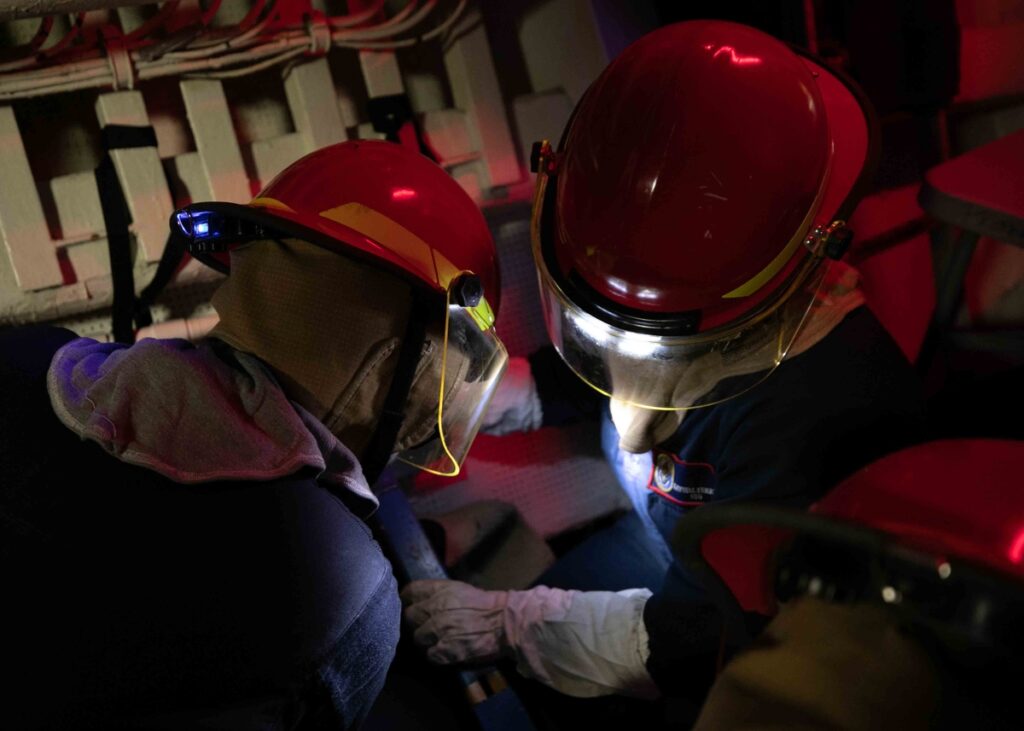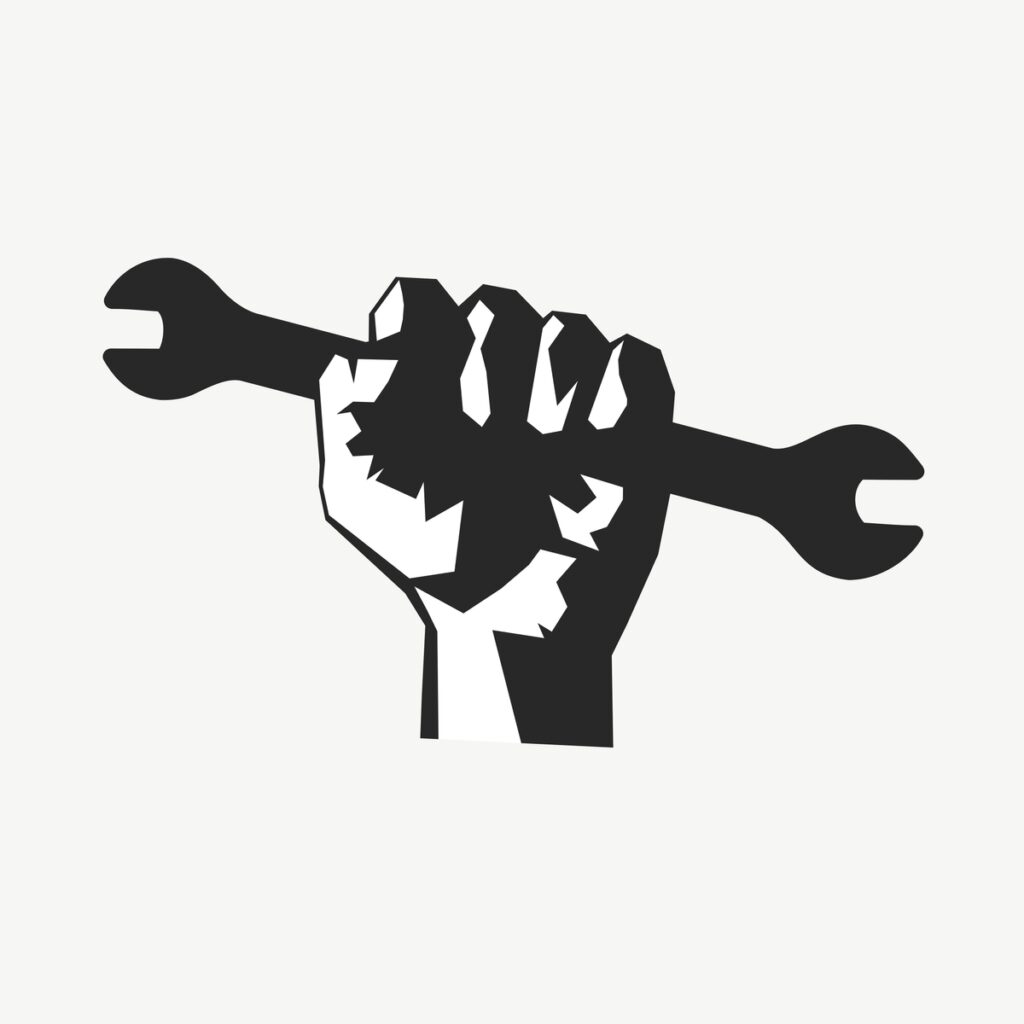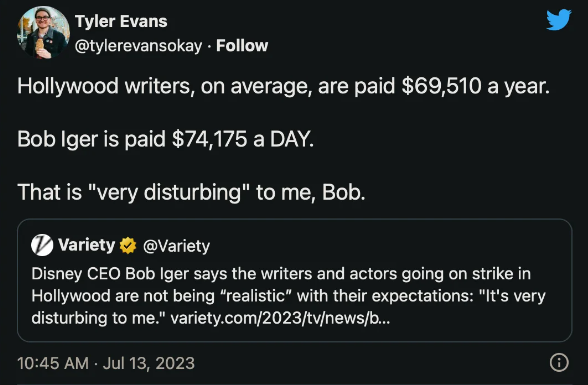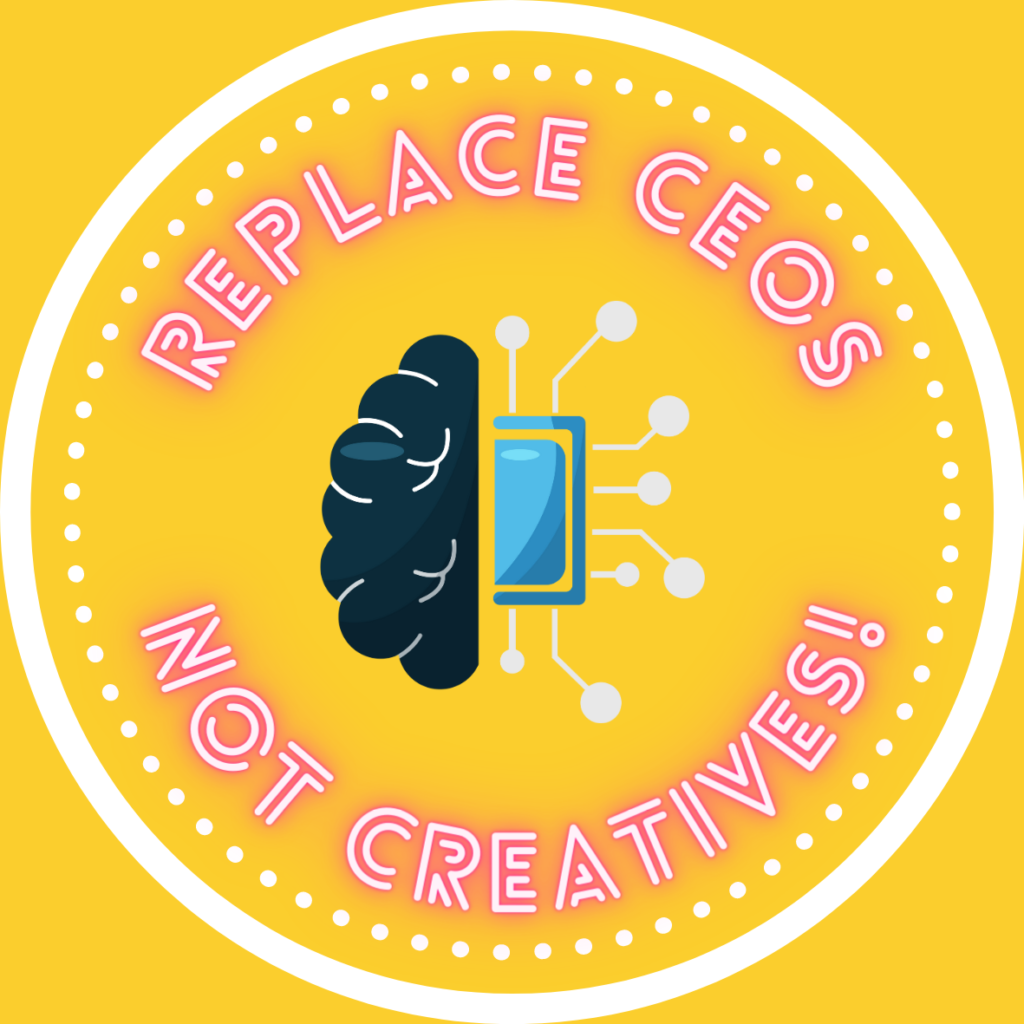
No Labor Day and The Labor Movement, Past and Present
This Labor Day, many people used the holiday to discuss the labor movement, both past and present. Calling it ‘No Labor Day,’ people especially highlighted the nationwide ongoing strikes and unionization efforts. So, I wanted to discuss what past labor movements afforded us, the sacrifices in achieving those rights, and current labor movements.
The U.S. Department of Labor says the holiday is “an annual celebration of the social and economic achievements of American workers.” This sounds great if it weren’t for how, now more than ever, the government and corporations are stifling the labor movement. (If you’ve seen Oppenheimer, you saw how the government viewed unionization efforts as “communist” and went after people who shared those ideals).
In reality, if either had their way, we wouldn’t have anywhere near as many protections as we do today. But even with those protections, the working class still fights for dignity, respect, and a basic standard of living. And in some cases, we’re fighting to keep what we’ve gained.
What The Labor Movement and Unionization Efforts Won For Us

We have much to be thankful for regarding worker rights and protections. Labor movements from almost a century ago fought with their blood, sweat, and tears to acquire them. In some cases, people lost their lives in the process.
The Fair Labor Standards Act of 1938, signed by President Franklin Roosevelt on October 24, 1938, provided a lot. It set the first national minimum wage, outlined the 40-hour work week, created overtime regulations, and enacted child labor laws. Early labor movements also acquired us workplace safety regulations.
You can thank the early labor movements for the fact that we don’t work 18-hour days, that the work weekend exists (that is, having two days off, at least for those who aren’t working multiple jobs), and the fact that we didn’t have to drop out of school as children to work. Or be forced to work with dangerous chemicals or in dangerous environments without protection.
The Sacrifices Made By Those Before Us

While bittersweet to say in today’s economy, the minimum wage is thanks to the sacrifices of laborers before us. When I say sacrifices, I mean that the government and corporations didn’t just hand us these rights. They fought hard against it. And they used the power of the state to do it.
If you’ve taken history, you may or may not have learned how local, state, and federal governments sent police to union bust and to break up strikes, protests, and other labor disputes throughout post-Civil War history. The police beat men, women, and children for protesting for labor rights and sometimes even shot protestors. Many were arrested and injured in the process. And some people were killed by police, business owners, and the dangerous environments these industries put people in.
You might have heard of the Triangle Shirtwaist Factory Fire. If not, here’s a quick history lesson: In 1911, the Triangle Shirtwaist Factory in New York caught fire, leading to a pivotal moment in labor history. In the fire, 146 employees, mostly young Jewish and Italian immigrant women, and even children as young as 14, perished. Why? Because the company didn’t want unionizers to enter the building. So, the business locked its employees inside the building during the workday. When a fire broke out from a discarded cigarette, the employees could not escape, and many died tragically. This incident was a catalyst for workplace safety laws. However, you’ll be furious to learn how the factory’s owners were found not guilty of manslaughter.
These are just some examples of how far we’ve come regarding labor rights. Bonus points to you if you know what the word “Pinkerton” or “Company Town” means. If not, I recommend you look those up. They’re making a bit of a comeback with corporations like Amazon and people like Elon Musk.
Anyway, let’s take a look at what working-class Americans face today.
Same Exploitation, Different Century
Minimum Wage
When we learned about history as children, it was taught through this lens, suggesting that the issues of the past were in the past. We’re led to believe that things like labor rights or civil rights were already fought for and won, and things are great because of it. And while things are arguably “better,” that doesn’t change the fact that we still face an insurmountable challenge today in fighting for our rights. Especially when the rights we won in the past are outdated for our society today.
The federal minimum wage was last increased in July 2009, raising it to $7.25 an hour. Just passing the 14-year mark, this is the longest America has gone without a minimum wage increase since Roosevelt signed the FLSA into law in 1938. Prior to that, the longest we went without an increase was ten years between 1997 and 2007. Before then, the longest we went was about six years. So, it’s valid to say we’re long overdue.
Even worse, because we’ve gone so long without a wage increase, the amount the minimum wage would have to be raised to even approach a basic standard of living would have to be more than doubled. And even then, it wouldn’t be enough. You might remember after the ‘08 recession, the Occupy Wall Street movement and the Fight For $15 movement tried to advocate against income inequality and raise the minimum wage. During that recession, our government did nothing to help working-class Americans, but they bailed out banks that caused that economic crisis.
Nearly 15 years later, that fight for a $15 minimum wage is outdated. In 2020, CNBC reported that minimum wage workers can’t afford rent in any U.S. state. In June of this year, they reported that a full-time worker in the U.S. needs to make a staggering $28.58 an hour on average to afford a modest two-bedroom apartment in their area. Moreover, more than a third of Americans are renting their homes. With minimum wage being a measly $7.25 an hour, you can imagine why the housing and resulting homelessness crises are out of control.
Diminishing Quality of Life
It’s far past the point of it being this individualistic failing of people. It’s a profoundly systemic one that must be addressed systematically. And it’s become more apparent in recent years, especially after COVID has killed 1.4+ million Americans thus far and continues to disable millions more.
Instead of seeing class consciousness, people claim, “No one wants to work.” This includes business owners offering minimum wage and abusive working environments being shocked that people aren’t lining up to apply or are quitting if they already work there. It also consists of the people angry that it now takes 20 to 30 minutes in a drive-thru to get their food because the business is short-staffed for reasons consumers fail to understand. All of which ties back to a lack of class consciousness.
With the need to make nearly three to four times as much as the minimum wage to afford a roof over their head, people are now working two to three jobs to barely get by. And with the cost of everything skyrocketing, those multiple jobs hardly cover additional expenses. And if you count taking care of your family or attending school as forms of labor (and you should), that’s basically an additional job.
So when politicians and the media say the unemployment rate is down, read between the lines. It’s not because there are lots of well-paying jobs or even indicative that people are thriving in this economy. It’s millions of Americans being overworked to make ends meet barely. And even working those multiple jobs, they’re not making enough. If you talk to unhoused people on the streets, you might be surprised to hear that many have jobs and even degrees. If that actually surprises you, I implore you to learn more about the homelessness crisis.
Just from talking to people on the phone while doing phone surveys with the non-profit I work with, the most prominent issue people appear to face right now is housing. A heartbreaking example is the fact that multiple people I’ve spoken to are retired and disabled, and their rent has gone up so much that Social Security and retirement don’t even cover it. One woman told me, nearly in tears, that her landlord told her to “get a job or you’re on the streets.”
And if that doesn’t boil your blood, I don’t know what will.
Workplace Safety
Another thing seemingly on the chopping block appears to be workplace safety.
You may have heard this summer about Texas Republican lawmakers and Governor Greg Abbot rolling back worker protections. This included mandatory water breaks for people who work jobs like construction. In cruel irony, they did this during the hottest summer on record. Luckily, a judge blocked the bill days before it went into effect.
In general, we also see places like Amazon forcing workers to work in hot warehouses without air conditioning in the middle of summer, work while deceased coworkers are left nearby, and even resort to peeing in bottles and defecating in bags to avoid reprimandation for using the bathroom.
Moreover, a significant example of diminishing workplace safety is the overall response that workplaces have had throughout the ongoing pandemic. From places forcing people to work while sick to businesses enforcing no-mask policies for their workers, like In-N-Out recently, it’s clear that workplace safety is being thrown out.
Now, I want to focus on something even more damning, which also involves this point.
The Resurgence of Child Labor
If you’re not as deep into the news cycle as I am, you might have missed this year that on multiple occasions at many different businesses across the country, instances of illegal child labor violations were discovered. In July, CNN reported an article with this lovely headline: “Illegal child labor is on the rise in a tight job market.”
It almost sounds like they’re manufacturing consent to accept child labor because of current economic circumstances. And remember how I mentioned how the media is talking about the unemployment rate? That same article has the following sentence:
“Unemployment in the United States sits near record lows at 3.6%, and a lack of workers has made it difficult for employers to fill jobs, especially in lower paid work.
“Employers are going to the cheapest and easiest avenue … to find workers,” said Barab.”
CNN, July 30, 2023
Places like McDonald’s were caught employing children as young as 14 who operated dangerous equipment and worked well past legal time regulations that child labor laws allow in the first place. Other chains like Dunkin Donuts and Chipotle were also found to use child labor recently. Even more terrifying, child labor was recently discovered in dangerous jobs like assembly lines, meat packing facilities, agriculture, and construction.
And, of course, these companies found violating the law get a slap on the wrist and fined what amounts to pocket change to them. Which, mind you, they budget for annually. Because it’s cheaper to pay a fine than it is to pay adults a living wage and benefits.
Moreover, Republican politicians across several states are criticizing child labor laws and are actively pushing legislation to allow legal child labor. This is horrible enough without considering the more insidious reason for it. As reports of migrant children being forced to work have surfaced, it seems obvious what the reasoning for changing child labor laws is at least partially about. And when you think of how our government forcibly separated these children from their parents, lost their records, and locked them in what are arguably concentration camps, it’s all the more disgusting.
Legal Slavery

Before I go on to the current labor movements and strikes, I want to quickly point out another facet of this overarching exploitation in our country.
If you know about the 13th Amendment, you might know the essential part is that it outlawed slavery in the country. But you might have overlooked that the loophole in the constitutional Amendment is that if you’re incarcerated, that doesn’t apply to you.
Meaning that the people in our prison system are subject to forced slave work. And before you go off about people being criminals or murders, I want you to consider the following:
- Not everyone in jail or prison is a murderer.
- Some people are incarcerated while awaiting trial, which means they haven’t even been convicted yet (innocent until proven guilty, right?).
- Some people are in prison for non-violent crimes, particularly marijuana possession.
- A majority of those people are Black and brown people, whom we know are disproportionately incarcerated and over-policed in the first place.
- Many, if not most, incarcerated people are more or less in prison because of systematic failures related to income inequality, racial inequality, housing, employment, physical and mental health care, childhood trauma and abuse, and other factors that led them to have a criminal record.
- Incarcerated people are still humans and still deserve fundamental rights, regardless of the ethos involved with their crimes.
- Allowing exploitation of incarcerated people easily means exploitation of anyone, including you or your loved ones.
- A for-profit prison system will keep people incarcerated and in inhumane conditions simply because they want to profit off those prisoners or save on costs (look at the issue of prisons not having air conditioning).
- We have a lot of unjust laws and outdated justice systems, which means that something like having a bunch of unpaid parking/speeding tickets may land someone in jail. Which, again, means that someone like yourself could end up being forced into legal slavery.
I’d continue, but if none of that asserts how no one should be subject to slavery, I don’t know what else to say. If you can argue excuses to allow slavery, I’m surprised you’ve made it this far anyway. But I digress.
Incarcerated people are incredibly vulnerable to labor exploitation and rarely have a choice. People might say, “If they don’t want to work, they don’t have to.” But it’s not that simple. The prisons get money regardless of whether or not you work, as the longer they lock you up, the longer they make money on your headcount. So, prisons will add time to people’s sentences for refusing to work. And I’m not talking about refusing to work in the prison food hall.
You may have heard how incarcerated people have helped as volunteer firefighters in recent years. You might be surprised to learn that “The initiative, which finds prisoners working as first responders and rescuers, dates back to the 1940s” (Smithsonian). They earn below minimum wage “between $2.90 and $5 a day depending on their duties—and slightly more when actively fighting a fire. Though their numbers have fluctuated over the years, they have often comprised approximately one-third of California’s firefighting force.”
Moreover, companies like Walmart, Starbucks, and Wendy’s use incarcerated slave labor to save money on labor costs. In the 2020 election, even political campaigns, like Michael Bloomberg‘s, used people lent by the prison system to do phone canvassing.
I want to emphasize the word “lent.” The prison system is LENDING human beings out for labor.
I’ll end this part here because, again, if this information doesn’t sway your empathy or compassion for others, there’s nothing else I can say. And if it does sway you, I implore you to learn more and help advocate for better protections for incarcerated people.
(Article continues after the ad)
Please follow our fantastic site sponsors! They make content like this possible! 🙂
The Hollywood Writers and Actors Strike
By now, I assume everyone has heard of and has developed an opinion about the current combined WGA writers’ and SAG-AFTRA actors’ guilds strikes happening in Hollywood.
And when I say people are opinionated about it, that is a spectrum. The circles I orbit around are fairly pro-labor and support the strikes. I myself will happily go without new content while I stand in solidarity with the unions and workers fighting for better treatment and wages. Am I sad that ‘Last Week Tonight With John Oliver’ stopped almost as soon as the new season began, or that the second season of Neil Gaiman’s ‘The Sandman’ got pushed back indefinitely because of the strikes? Yes. But I am more outraged over the treatment of the working class than I am sad that I don’t get new content. Priorities, people. Please.
That said, the other side of the spectrum of opinion is vastly misinformed. I’ve heard arguments like, “Well, everything is poorly written anyway, so maybe workers should be replaced with non-unionized people or even AI.” I’ve also heard arguments assuming that writers, actors, and other people who make movies (lighting, sound, etc.) are “all rich anyways, so why do they think they need to be paid more?”
I’m begging people to understand that not everyone in Hollywood is making what actors like Roberty Downey Jr. make, or most recently in her success, actors like Margot Robbie (because I must have an obligatory Barbie movie mention here).
Most people in Hollywood make less than $50K-$70K a year. And even for those higher-paid actors, if they have streaming-based work like a Netflix original, they don’t get residual payments. And if they do, it’s literally pennies. Even ‘Breaking Bad’ actor Aaron Paul just came out saying that he doesn’t even make anything in residuals from the show despite active streaming of it.
A prominent voice in the strikes has long included Adam Conover from ‘Adam Ruins Everything.’ A month ago, he sat down for a podcast interview discussing the strikes. If you want to learn more from someone on the front lines, that’s a great place to start.
So, what exactly are Hollywood workers fighting for?
Wages, Residuals, Benefits, and Working Conditions
The first thing they’re striking for is higher wages and residual payments, particularly regarding streaming services and productions. Next is to be provided benefits like health care if they’re not being paid enough to afford their own. In particular, because of the increasingly shortened project times, people in Hollywood work for shorter amounts of time before finding another project. This has led to disruptions in health insurance coverage due to the projects ending and because of frequently changing income.
In addition, with the increasing cost of living (especially in places like Southern California) where these people work, they aren’t making enough to afford housing, which means they aren’t making enough to afford health insurance out of pocket. And you all know I am an advocate for universal health care and believe that healthcare (and housing) are a human right. So that alone has me on their side.
In addition, the industry has experienced stagnation, as the short project times lead to reduced on-the-job experience and networking opportunities for Hollywood workers to move up in their careers. Even more devastating is how so many projects and media have recently been wiped from streaming services so the hosting companies can save money on taxes. So, in some cases, a lot of the work people have done is also being erased on a whim.
Across the board, Hollywood workers can barely afford to work or even grow in their own industry.
The Threat of AI in Hollywood
What is especially concerning is that a new danger to labor in nearly all industries is rising. And that is AI.
You might remember the article we published a while back discussing how AI art has been detrimental to artists. As expected, the wave of AI has become a tsunami that greedy corporations, and in this case, the studios, are happily surfing on to engulf entire industries of creative labor.
If you haven’t heard, Hollywood companies have proposed clauses in their contracts with people like background actors and day workers on film and TV show sets that they agree to be digitally scanned so Ai can copy and reuse their likeness in anything, indefinitely, without compensation.
In plain speak, they want to be able to scan background actors (and assumably/eventually the main actors), store their image, voice, and everything else, and use that freely without restriction. Meaning they pay you for a day’s worth of work, and then they don’t have to pay you or credit you for anything ever again. And while they’re primarily focusing on extras in the background or people with small supporting roles, I want to address two points.
One, this is how a lot of actors get their start. Without the ability to work on multiple projects and get paid for your time and your you-ness, these streaming/film companies are threatening to more or less wipe out acting as a profession.
And two, while the focus might be on these more minor roles, the end game will eventually be to include big-name actors in this as well. At least those who don’t already have protections in their contract against this. But if all newer actors have to sign these agreements, how long until we run out of real human actors for companies to make higher profits?
Imagine a world where new movies and shows are forever made with the same actors, but nothing is actually real or new. It’s like watching those weird, uncanny-valley-level hologram performances of deceased musicians. And it lacks any human nuance of emotion or depth of experience. Human actors bring their own life experiences, traumas, dreams, and so on to their roles. A computer can’t do that. It can only replicate patterns. I don’t want to live in that world.
The General Refusal by Studios to Negotiate in Good Faith

Lastly, these rich assholes at these greedy studios are saying some disgusting and even downright evil shit concerning the strikes.
This includes Disney CEO Bob Iger (who makes about $75K per day and earned $45.9 million in 2021) saying the writers and actors striking had “unrealistic” and “unreasonable” demands that he finds “disturbing.” And it ranges to anonymous studio executives saying they plan to drag the strikes out so long that people lose their homes and apartments. Apparently, to another insider, causing people to become homeless is “a cruel but necessary evil.”
Mind you, some smaller studios have already agreed to the WGA and SAG-AFTRA demands and signed contracts with them. This includes Studio 24, who brought us ‘Everything, Everywhere, All At Once’ and Cocaine Bear. It also includes Neon and STX International, who actor Adam Driver mentioned at the recent premiere of his new movie ‘Ferrari.’
“Why is it that a smaller distribution company like Neon and STX International can meet the dream demands of what SAG is asking for — the dream version of SAG’s wish list — but a big company like Netflix and Amazon can’t? Every time people from SAG go and support movies that have agreed to these terms with the interim agreement, it just makes it more obvious that these people are willing to support the people they collaborate with, and the others are not.”
Adam Driver (MSN)
So regardless of anything else (though the other things are the selling points, and this is more the cherry on top of this fuck corporate greed sundae), the very response by corporate Hollywood is enough to make any compassionate person stand in solidarity with the writers and actors.
Replace CEOs, Not Creatives!

We should all be able to agree that if there’s any argument, especially concerning this shift towards AI replacing labor, it should replace one of the most expensive and easily replaceable jobs: corporate executive. Let the computers do the financing and stockholder stuff, and let humans do the creative work.
This is why I just made a new sticker: “Replace CEOs, Not Creatives.” As a Sticker For Solidarity, this design will result in a $1 donation to the Entertainment Community Fund to support Film and TV workers on strike!
As an artist and consumer of all art forms, I don’t want to live in a world where computers predominantly produce movies, shows, books, music, or other art. There’s a time and place for that, but I want real humans to be the ones primarily creating things. No offense to the computers; they were made this way, or at least are being misused with ill intent by a few rich, greedy assholes to protect their profits. AI can be a helpful tool but is too easily used to exploit people.
Stand in Solidarity With The Working Class
To celebrate No Labor Day every day, stand in solidarity with working people, and learn how to increase your class consciousness. If you lean towards arguments like “no one wants to work” or think people don’t deserve a livable wage for x, y, or z reasons, you might want to check your understanding of things and consider who is leading you to think those things. Because odds are that those are lines being fed by corporate media who want you to sympathize with the 1% and turn on the people who create and manage literally everything around you.
If it weren’t for the people stocking or ringing up your groceries or preparing your food at drive-thrus and restaurants, you wouldn’t have that “luxury” of easily accessible food. Likewise, if it weren’t for the hundreds, if not thousands, of people working on film projects and TV shows, you wouldn’t have all the endless content on the timeline 2you enjoy today. (And in the generation of Marvel moviegoers waiting after the film for those post-credit scenes, you have to understand how many people it takes to make a movie.)
Learning More About Recent and Ongoing Labor Movements
Some Recent Things of Note
I could go on for days about the various labor movements happening, so I will wrap up this article with some “homework” if you want to learn more. I wanted to write about these things below, but with how long this is already, I am going to leave it to you, dear reader, to explore yourself.
- How over 350 Starbucks locations are now unionized, despite illegal union busting by the corporation.
- How the first Amazon warehouse unionized, also in the face of illegal union busting.
- How UPS workers recently won their contract negotiations, including getting air conditioning in the delivery trucks.
- How dancers at a Los Angeles topless bar become the country’s first unionized strippers.
- Efforts to unionize gig workers like Uber and Lyft drivers.
- How VFX artists at Marvel and Disney are voting to unionize.
- How President Biden blocked the railroad workers from striking last year for sick days and safety regulations. Months later, a train derailment caused by safety issues happened in East Palestine earlier this year and the resulting poisoning of Ohio residents and wildlife.
- How this Labor Day, healthcare workers in LA protesting for better pay and staffing were met by police response.
Other People Discussing Labor Movements
In addition, you can check out commentary by independent journalists reporting on the topic. One such person that I follow who’s very vocal about recent labor movements is Joshua P. Hill. For Labor Day, he wrote an article titled “This Day is For Laborers.” You can also learn more about the growing labor movement on this Twitter thread.
The Twitter profile @FuckYouIQuit is also a good source of commentary and information about labor relations and disputes. And there are many others out there; you just have to look!
So, for this (belated) No Labor Day, learn about and appreciate what labor movements have gained for us all and what they’re fighting for today. Appreciate what we have because of labor, from basic services and necessities to the joys of art like film, writing, and art in general. And consider what things would be like without labor or labor rights.
Thank you to our supporters and sponsors!
As always, we want to thank our Patreon’ Cultivator’ supporters and sponsors who help make content like this possible!
The following Patron(s) supported the production of this article:
Crystal Gropp
The following sponsors supported the production of this article:
Viva La Compost & LunaKai Lash



